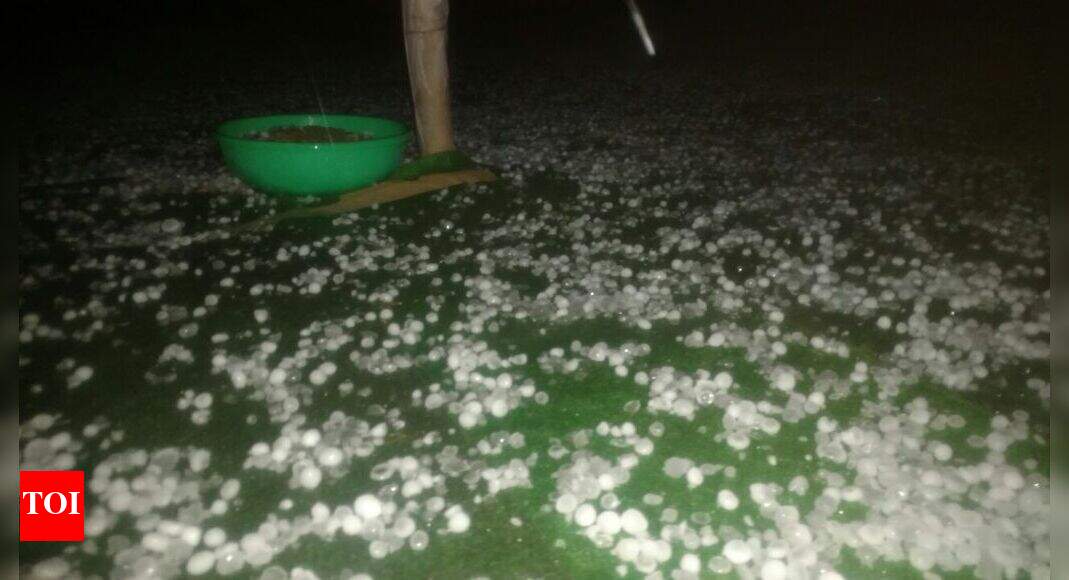Hailstorms Damage Summer Landscapes: Pools And Gardens Impacted

Table of Contents
Hailstorm Damage to Swimming Pools
Hailstorms pose a significant threat to the structural integrity and functionality of swimming pools. The force of falling hailstones, especially large ones, can cause a variety of problems.
Structural Damage
The impact of hail can lead to a range of structural damage, depending on the size and force of the hailstones and the material of your pool.
- Fiberglass Pools: Hailstones can crack the gel coat and even penetrate the fiberglass shell, resulting in leaks and structural weakness. Smaller hail may cause minor chipping, while larger hailstones can create significant fractures.
- Concrete Pools: Concrete pools, while generally more durable, are not immune. Hail can chip away at the surface, exposing the underlying concrete and potentially causing larger cracks. This can lead to structural instability and costly repairs.
- Vinyl Liner Pools: The biggest concern with vinyl liner pools is puncture damage. Large hailstones can easily pierce the liner, leading to leaks that require immediate attention and potentially a complete liner replacement.
Here's a breakdown of damage based on hail size:
- Small Hail (under 1 inch): Minor surface damage, chipping of paint or plaster.
- Medium Hail (1-2 inches): More significant chipping, potential for small cracks in fiberglass or concrete. Possible punctures in vinyl liners.
- Large Hail (over 2 inches): Severe damage, large cracks, significant punctures, potential for structural collapse in extreme cases.
Equipment Damage
The destructive power of hail extends beyond the pool structure itself. Pool equipment is often vulnerable to hailstorm damage.
- Pumps and Filters: Hail can damage pump housings and filter components, leading to malfunctions or complete failure. Debris from the storm can also clog filters and pipes, requiring cleaning and maintenance.
- Pool Lighting: Underwater pool lights are particularly susceptible to damage, often resulting in shattered lenses or broken wiring.
- Coping Stones and Deck: Hail can crack or break coping stones around the pool's edge, and even damage the surrounding deck surface.
It's crucial to conduct a thorough inspection of all pool equipment immediately after a hailstorm to identify and address any damage early.
Water Contamination
Hailstorms can introduce contaminants into your pool water, posing health risks and necessitating extensive cleaning.
- Debris: Hail carries dirt, leaves, and other debris into the pool, clouding the water and potentially introducing harmful bacteria or algae.
- Pollutants: Depending on the storm's path, hail may carry pollutants from the surrounding environment into the pool water.
- Algae Growth: The introduction of debris and disruption of the pool's chemical balance can create ideal conditions for rapid algae growth.
Following a hailstorm, it's often necessary to drain, thoroughly clean, and refill the pool to ensure water safety and clarity.
Hailstorm Damage to Gardens
Gardens are equally vulnerable to the destructive force of hail. The damage can range from minor cosmetic blemishes to complete destruction of plants.
Plant Damage
The impact of hail on plants depends on their type, age, and the severity of the hailstorm.
- Leaves and Flowers: Hail can bruise, tear, and shred leaves and flowers, leaving them disfigured and potentially unable to photosynthesize effectively. Delicate blossoms are particularly vulnerable.
- Stems and Branches: Larger hailstones can break stems and branches, causing significant damage to the overall structure of plants.
- Trees and Shrubs: Even mature trees and shrubs can suffer significant damage from a severe hailstorm, resulting in broken branches and leaf loss.
Some plants are more susceptible than others:
- Delicate flowers: Roses, petunias, and other delicate blooms are easily damaged.
- Leafy vegetables: Lettuce, spinach, and other leafy greens can be severely bruised or torn.
- Fruit trees: Hail can cause scarring and damage to developing fruit.
Landscape Damage
The impact of hail extends beyond the plants themselves. Many landscape features can be affected:
- Fences: Hail can damage wooden fences, causing splintering and breakage.
- Patios and Decks: Hailstones can chip and crack paving stones, leaving unsightly damage.
- Garden Ornaments: Statues, pots, and other garden decorations can be broken or damaged.
- Irrigation Systems: Hail can damage sprinkler heads and other irrigation components.
Post-Hailstorm Garden Care
After a hailstorm, prompt action is needed to minimize further damage and help your garden recover.
- Remove damaged material: Remove severely damaged plant material to prevent the spread of disease.
- Provide support: Stake damaged plants to support them and prevent further damage.
- Water carefully: Water your plants to help them recover, but avoid overwatering.
- Seek professional help: For extensive damage, consult a professional horticulturist for advice and assistance.
Protecting Your Landscape from Future Hailstorms
While you can't control the weather, you can take steps to mitigate the impact of hailstorms on your pool and garden.
Preventive Measures for Pools
- Hail-resistant pool covers: Invest in a durable pool cover designed to withstand hail impact.
- Regular maintenance: Regular inspections and maintenance can help identify and address vulnerabilities before a hailstorm.
- Sturdy fencing: Consider installing strong fencing around the pool to protect equipment from flying debris.
Preventive Measures for Gardens
- Hail-resistant plants: Choose plant varieties that are known for their resilience to hail damage.
- Strategic planting: Plant less vulnerable species in exposed areas.
- Protective coverings: Use netting or other coverings to protect vulnerable plants during hailstorms.
- Secure loose objects: Secure any loose objects in your garden that could be damaged or cause further damage.
Conclusion
Hailstorms can cause significant and costly damage to both swimming pools and gardens, creating both financial and emotional distress. By understanding the potential damage and implementing preventive measures, you can significantly reduce the impact of future hailstorms on your summer landscape. Remember to conduct a thorough post-hailstorm inspection of your property and seek professional assistance when needed to repair hailstorm damage to summer landscapes. Taking proactive steps will help ensure you can continue to enjoy your beautiful outdoor spaces throughout the summer months.

Featured Posts
-
 How A Childhood Tie Made Payton Pritchards Career Feat More Meaningful
May 12, 2025
How A Childhood Tie Made Payton Pritchards Career Feat More Meaningful
May 12, 2025 -
 Maintaining Key Road Access A Realistic Approach For Tasman Council
May 12, 2025
Maintaining Key Road Access A Realistic Approach For Tasman Council
May 12, 2025 -
 The Significance Of Sylvester Stallones Part In Jason Stathams Upcoming Film
May 12, 2025
The Significance Of Sylvester Stallones Part In Jason Stathams Upcoming Film
May 12, 2025 -
 Planning Your Next Trip Flights Make It Fun
May 12, 2025
Planning Your Next Trip Flights Make It Fun
May 12, 2025 -
 Hertha Berlins Crisis Boateng And Kruses Perspectives
May 12, 2025
Hertha Berlins Crisis Boateng And Kruses Perspectives
May 12, 2025
Latest Posts
-
 Athlitikes Metadoseis Serie A Odigos Gia Toys Agones
May 13, 2025
Athlitikes Metadoseis Serie A Odigos Gia Toys Agones
May 13, 2025 -
 Persipura Butuh Dukungan Anda Himbauan Kakanwil Anthonius Ayorbaba
May 13, 2025
Persipura Butuh Dukungan Anda Himbauan Kakanwil Anthonius Ayorbaba
May 13, 2025 -
 Ayorbaba Himbau Dukungan Untuk Persipura Kakanwil Papua Ajak Masyarakat Bersatu
May 13, 2025
Ayorbaba Himbau Dukungan Untuk Persipura Kakanwil Papua Ajak Masyarakat Bersatu
May 13, 2025 -
 Kakanwil Papua Ajak Masyarakat Dukung Persipura Dukungan Penting Untuk Kebangkitan Tim
May 13, 2025
Kakanwil Papua Ajak Masyarakat Dukung Persipura Dukungan Penting Untuk Kebangkitan Tim
May 13, 2025 -
 Memorial Service For 15 Year Old School Stabbing Victim
May 13, 2025
Memorial Service For 15 Year Old School Stabbing Victim
May 13, 2025
